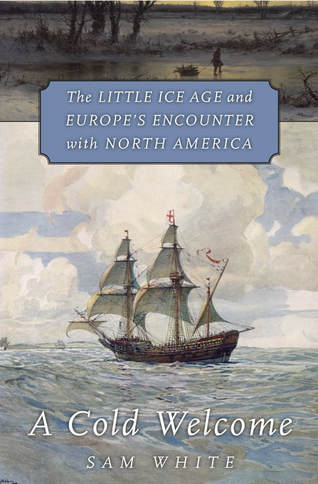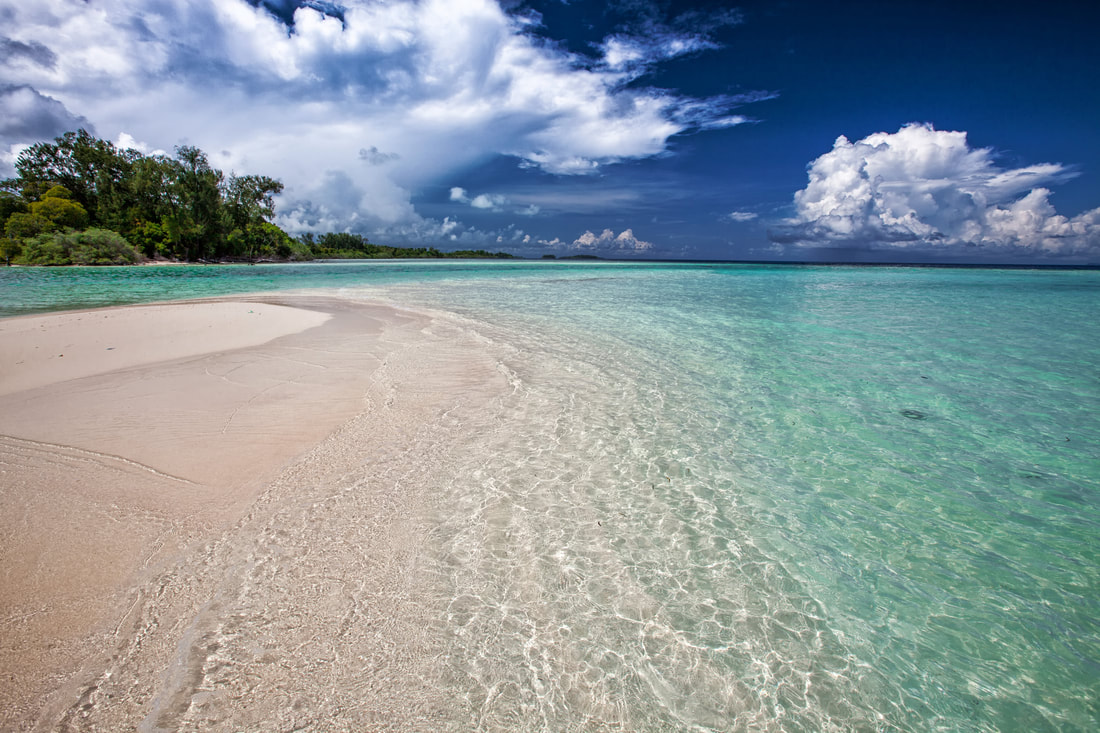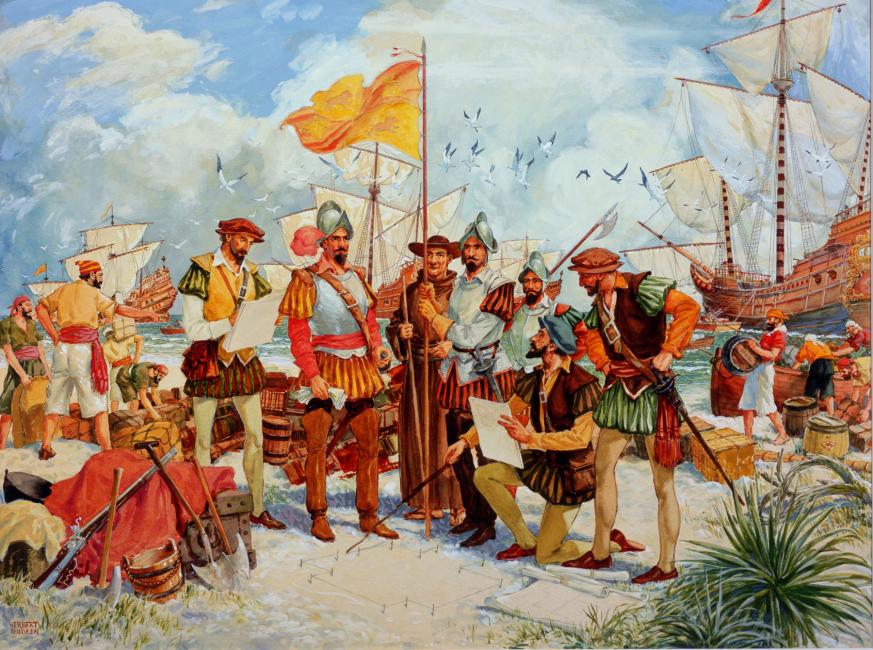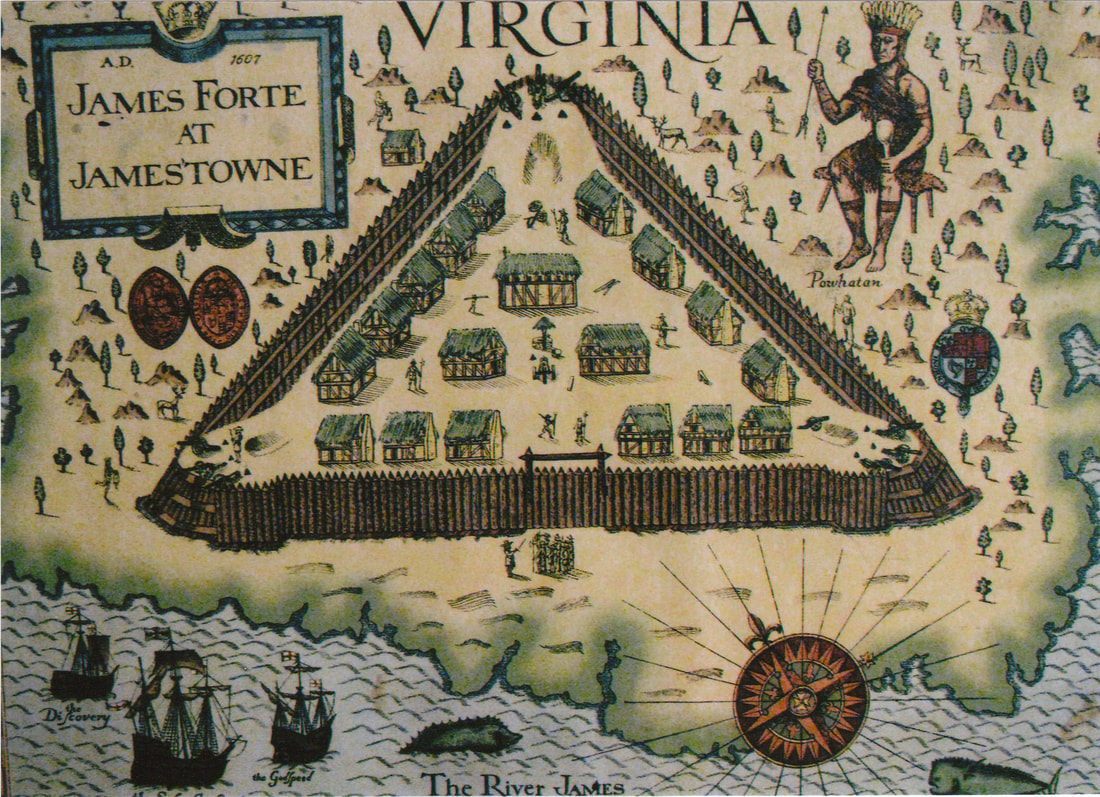|
Dr. Sam White, Ohio State University. In August 1559, the aspiring conquistador Tristán de Luna y Arellano brought some five hundred soldiers and a thousand colonists from New Spain to a settlement on Pensacola Bay, Florida, which he declared “the best port in the Indies.” The viceroy of New Spain reported to the king “the port is so secure that no wind can do them any damage at all.” Even as he wrote, a hurricane was entering the Caribbean, poised to devastate Puerto Rico. A week later, it roared into Pensacola Bay. Tristán de Luna had no experience of tropical storms that could overwhelm even the strongest harbors. He had left all the settlement’s supplies aboard his ships in the bay. Food, clothing, arms, and armor all went down to the bottom of the sea with the wreck of his largest vessels. Only two small boats survived to take the sad news back to the viceroy in Mexico City. Within months, the colony unraveled amid hunger, exposure, infighting, and Native American resistance. When the survivors were finally evacuated, they came home complaining of Luna’s erratic leadership and the region’s “bad climate.” Despite the scale of his expedition, and its chance to change the history of colonial America, few Americans today have even heard of Tristán de Luna. On the whole, that first century of European explorations and colonizing ventures in North America remains largely forgotten among the American public, more legend or Disney storytelling than real substance. That forgetfulness is a shame for two reasons, as I’ve come to learn my research. First, the real stories of those early expeditions are a lot more fascinating than the Disney version. Second, they present object lessons in the challenges of climate change that could be surprisingly relevant today. Like many historians who study past climate and weather, I stumbled across my topic – the climate history of North America - by accident. As a graduate student, more than a decade ago, I was preparing a dissertation on the suitably obscure topic of agrarian crises in early modern Anatolia. What I discovered was that the Ottoman Empire, which then ruled the whole Eastern Mediterranean, had been unprepared for the onset of the coldest and (in that region) the driest phase of the Little Ice Age, from the late 1500s to late 1600s. Freezing winters and droughts, harvest failures and the death of livestock brought famines and undercut provisioning systems that the empire needed to supply its cities and armies. Soldiers mutinied; peasants and pastoral tribes rose up in rebellion; rural populations perished or fled; and the empire barely survived the chaos. Published just as the Syrian civil war began, my first book, The Climate of Rebellion in the Early Modern Ottoman Empire, could have been a parable about the dangers of climate-driven conflict. Nevertheless, I was aware of the differences as well as the parallels between past and present. Neither the Ottoman crisis then nor the Syrian crisis now can be reduced to just climate change. Climate vulnerabilities have changed a lot in four centuries, in no small part because people in Ottoman times didn’t know that they were living through climate change. What we now recognize as the Little Ice Age was to them just a series of unforeseeable disasters. Today global warming is a much-discussed topic, and we all (should) know that climates are changing. Our challenge is how to imagine our future climates and adapt to them. So I wanted to find another historical example with parallels to our present situation.  That became one motivation to write a new book (left) about climate and colonial North America. When Europeans first came to the New World they weren’t expecting a change of climates. Received wisdom was that climates were more or less the same everywhere along the same latitudes. However, experience from the time of Columbus onward revealed that the Americas had different weather patterns and different seasons, even on the same parallels. The tropics were not the uninhabitable “Torrid Zone” that ancient authors had supposed them to be, while the continental seasons of North America turned out to be much more variable than in the maritime climates of Western Europe. The challenge for Europeans was to make sense of that change in climates and plan their expeditions accordingly. They had to decide where to explore or settle, what clothes to bring and crops to plant, often based on nothing more than rumors, hearsay, or passing observations. Planners and promoters of these expeditions tended to fill the gaps in their knowledge with self-serving rationalizations. Early voyages in search of a Northwest Passage over Canada epitomized the problem. Every encounter with extreme cold or sea ice could be explained away as some local aberration or accident. Similar rationalizations led Spaniards to look for Mediterranean conditions and a “new Andalusia” in Georgia and the Carolinas, and inspired English visions of silk, spices, and sugar in Virginia and even New England. For this reason, early European explorers and colonists were sure to be disappointed with the climates of North America. What turned disappointment into disaster were the extreme conditions typical of the Little Ice Age. On examining the range of proxy and written evidence for North American climates, I found the same sort of anomalies that caused trouble for the Ottoman Empire. The epic drought and extreme cold during Jamestown’s “starving time” of 1609-10 is only the most famous example. In the 1540s, Spanish expeditions in California, the Southwest, and Southeast all encountered freezing winters with heavy snows where they would rarely be found today. Then from the late 1500s to the turn of the 17th century, a series of large volcanic eruptions brought global temperatures lower still. In 1601, for instance, the Rio Grande froze over near today’s Albuquerque; frost and drought brought famine to the Pueblos; and Juan de Oñate’s conquest of New Mexico nearly collapsed from hunger and desertions. French settlers in New England and Canada perished in the long winters that decade, and the little-remembered English colony at Sagadahoc, Maine gave up in 1608 after less than a year, its “hopes . . . frozen to death” in the words of one contemporary.
Cold and drought, as well as storms, afflicted colonial expeditions in different ways. Crops failed and animals died. Diseases spread from exposure, poor water supplies, and malnutrition. Long winters without fresh food brought scurvy. Supply ships were lost when needed most. Competition for food and fuel engendered conflict between European invaders and Native Americans, who also had to adapt to Little Ice Age conditions. Yet evolving perceptions of North America’s climates were just as consequential as realities. Years or even decades of experience with parts of the continent did not always translate into realistic appraisals of their climates or accurate planning. Sometimes when the high hopes of early expeditions met the shock of unexpected extremes, they gave way to exaggerated disparagement and despair. Around the 1570s, after decades of disappointment, Spanish officials began to dismiss the whole of La Florida (today’s Southeastern United States) as “worthless,” and the near collapse of Spanish New Mexico left a similarly negative impression among officials in Mexico and Spain. The failure of the Sagadahoc colony killed interest in New England for over a decade: “the country esteemed as a cold, barren, mountainous, rocky desert,” in John Smith’s words. Settlers in the Jamestown colony, however, refused to acknowledge Virginia’s environmental challenges. Their leaders blamed any problems on the colonists themselves and insisted the region was as temperate and fertile as anywhere in Europe. They became, in a sense, America’s first climate change deniers, sending thousands of colonists to early graves across the Atlantic. The climatic vulnerabilities of the modern world may bear little resemblance to the struggles of isolated colonies four or five centuries ago. But human psychology has probably changed much less. It is easy now, as it was back then, to embrace denial or despair. It is a lot harder to adjust expectations, make new investments, or accept a different way of life than the ones we’re used or have planned on. With Hurricane Harvey, the Houston area has just experienced its third so-called 500-year precipitation event in three years—and while it would be a mistake to write off the future of a city like Houston, it would be equally mistaken to imagine it can keep on going the way it has for the last generation. As we rebuild around Houston (and the next city to get flooded, and the one after that) it could help to compare ourselves to the early European colonists of North America. Even if we rebuild on the same locations, climatically speaking, global warming means we, too, have crossed into a new world.
Thank you for your article, well done.
Donald Cowick
4/21/2019 11:40:28 pm
I live in New Mexico and would like to understand what the weather patterns were four hundred years ago during the last Grand Solar Minimum. Could you please suggest some pertinent historic texts which discuss conditions back then? Especially the Northern New Mexico Four Corners area.
PCloud
8/16/2020 09:28:12 pm
Native and Spanish New Worlds: Sixteenth-Century Entradas in the American Southwest and Southeast 4/2/2020 08:27:52 am
I was reading this and i realy found what i was looking for your article is really informative and i’ll be grɑteful if ʏou keep writing in the future.
relations became close, the envoy of the envoy was limited
PCloyd
8/16/2020 09:27:24 pm
Aryne: 10/23/2020 01:58:43 am
Thank you for the nice article. I learned a lot from it. Comments are closed.
|
Archives
March 2022
Categories
All
|




 RSS Feed
RSS Feed